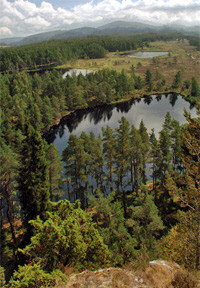Scandinavian FWC
The Scandinavian regional case is a forest-defined case for the county of Västerbotten in Sweden. This is in comparison to the Iberian (consumption-defined ) and the Baden-Württemberg (region-defined). In a forest-defined FWC, the forest resource is specified and only this resource is followed throughout the FWC. This means that the Scandinavian case deals with the whole forest chain from the production and harvesting of the trees to the end-user of the forest product produced with the origin of the wood from Vasterbotten. In M2 the present status of forest area in 2005 have been described and divided in five different decided management regimes, i.e. close-to-nature forestry (pine and spruce), combined objective forestry (birch and mixed), and intensive even-aged forestry (mixed). The sustainability of these different management regimes will be further explored during the following steps of the project [???? what to add???]. In M3 the transport of the annually cut trees from the woods to the industries (saw mills, kraft mills and fine paper mills) are described. The further processing of the cut volumes are defined and presented in M4. The wood chain in the Scandinavian case ends with the processes dealt with in M5, i.e. the producer-consumer interaction, which are divided into the three groups; distribution of the finished product from the producer to the end-user, use of the wooden products, and recovery and the end-of-life routes for the wooden products. The end products defined by M4 are e.g. wooden houses, gluelam, windows, furniture, planed goods, particleboards, plywood, sawnwood, pellets, and bioenergy. The basic outline of the case study is presented in more detail in the the two Appendices of the EFORWOOD report PD2.0.5 - Updated report on the forest-based cased study "Scandinavian regional case".
The technology scenario is implemented as case study in Scandinavia; The case study takes into account advanced techniques that improve timber use efficiency and production flexibility of saw-mills. Improved log grading and information systems reduce the amount of sawdust and waste that are produced in the milling process. As a result the flow of by products and waste as source for paper and pulp and panel industries will be reduced. Increased flexibility of production of sawn wood increase the quality of products that are better tailored to consumers needs. The increased value added translates in increased costs. The production of smaller, consumer oriented batches of sawn timber will result in increased transportation. The increased automation of the production process decreases need manpower, but also decreases occupational health risks.

